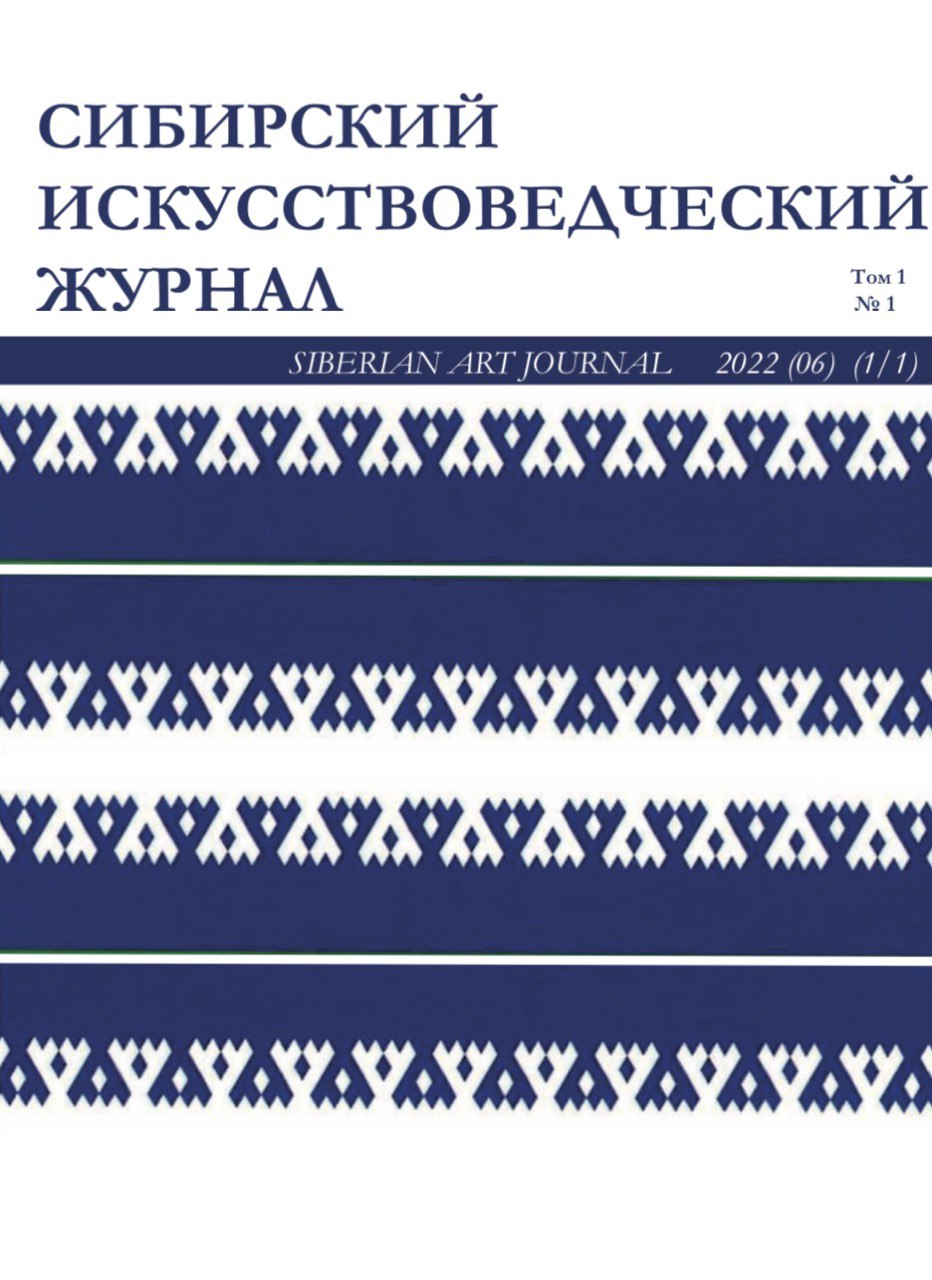This article is devoted to the analysis of the work of fine art by the English pre-Raphaelite artist Dante Gabriel Rossetti "Paolo and Francesca da Rimini" 1867, 43.7 x 36.1 cm, National Gallery of Victoria, Melbourne. I offer the first holistic philosophical and art criticism analysis of this canvas by using the conceptual provisions of the theory of art research, general scientific research methods, as well as methods of semiotic analysis. This study provides a methodical analysis of the material, index and iconic signs of the artwork. At the first stage of the research, the article reveals the features of the painting related to its format, size, and color scheme. In particular, it describes the purpose of the artistic canvas for an individual perception and contemplation of the viewer. In addition, the paper consists information about the complementary color harmony based on two opposite colors of the spectrum (red and green). Moreover, the paper provides information about the main compositional schemes and formulas of the painting. The results obtained in the analysis of index signs show that a large number of them reveal such concepts as “love", "eternity", as well as “cyclicity”, due to the presence of many elements having the shape of a circle. The analysis of the iconic signs of the painting contains the information about the main visual concepts of the work of art, the central event represented in the artistic space of the painting, and the main artistic idea of the artwork, consisting in the victory of love over death and possessing a universal, timeless character. Furthermore, the article reveals the personal aspect of the artistic idea, consisting in the desire of Dante Gabriel Rossetti to demonstrate the eternity of his love for his deceased wife Elizabeth Siddal through the images of Paolo and Francesca da Rimini.
Dante Gabriel Rossetti, Paolo and Francesca, philosophical and art criticism analysis, work of art.
1. Alighieri, D. (2021). The Divine comedy. In Royal classics, 568.
2. Bochkareva, N. S., & Skryabina, E. D. (2016). The interaction of poetry and painting in D. G. Rossetti's ecphrastic sonnets "The Beauty of the Soul" and "The Beauty of the Body". Practices and interpretations: Journal of philological, educational and cultural studies, 263-272.
3. Verizhnikova, T. (2009). English painting. In Aurora, 224.
4. De Kar, L. (2003). Pre-Raphaelites. Modernism in English. In AST, 128.
5. Kiryuhina, E. M. (2015). Representation of images of historical figures of the Middle Ages by pre-Raphaelites and artists of their circle. Teacher of the XXI century, 3-2, 277-288.
6. Kuznetsova, T., & Nikolaeva, O. (2000). Paolo and Francesca - Legend and history. In Romeo and Juliet: Thematic website; author's research project.
7. Leslie, P. (1984). The Pre-Raphaelites. The Victorian avant-garde. In Collection of the Tate Gallery, London, 278.
8. Majorova, N. (2008). Masterpieces of world painting. Victorian painting and Pre-Raphaelites. In White City, Moscow, 129.
9. Mosin, I. (2006). Pre-Raphaelism: An illustrated encyclopedia. In SZKEO, 256.
10. Nekrasova, E. A. (1975). Romanticism in English art. In Iskusstvo, 256.
11. Nikiforova, A. E. (2022). Gender aspect in the work of the Pre-Raphaelites. Bulletin of the St. Petersburg State Institute of Culture, 75-80.
12. Svetlov, I. (2007). Pre-Raphaelites. In White City, Moscow, 52.
13. Tarasova, M. V. (2015). Theory and practice of dialogue between the viewer and works of art. In SFU, 236.
14. Tarasova, M. V., & Zhukovskiy, V. I. (2010). Communicative foundations of artistic culture. In SFU, 145.
15. Ciporkina, I. (2006). Pre-Raphaelites: From old games to new ideas. Historian and artist, 1, 83-100.
16. Shvinglhurst, E. (1995). Pre-Raphaelites. In Spika, 80.
17. Shestakov, V. P. (2004). Pre-Raphaelites: Dreams of beauty. In Progress-Tradition, 224.





